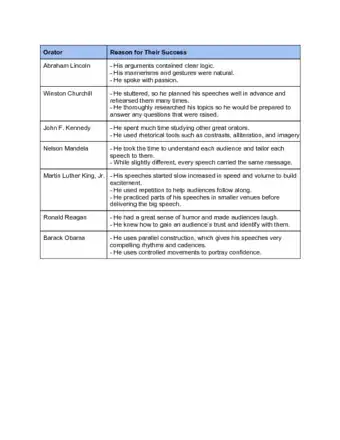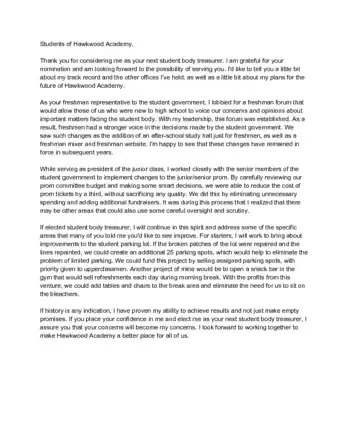This article was co-authored by David A. Payne, JD. David A. Payne is the President and Executive Producer of RainStream Media, a media company who focuses on telling true crime stories with underlying themes of social justice. He has extensive experience in media and entertainment, having served as both General Counsel and a C-level executive for comapnies such as Turner Broadcasting, CNN, and USA Today. He is also a lawyer - he received his JD from the Duke University School of Law and is licensed to practice law in California.
There are 10 references cited in this article, which can be found at the bottom of the page.
This article has been viewed 219,730 times.
They say first impressions last a lifetime, and whether you realize it or not, your voice has a huge impact on the impression you make. Your voice can command respect and show confidence, but it can also be welcoming and help you express emotion. If you have a weak, nasal, or breathy voice, you may not be giving off a powerful first impression, but the good news is that you can improve your speaking voice! While it’s not possible to change the pitch of your natural voice, you can work on other elements that will make it stronger and more impressive.
Steps
Breathing and Relaxing Techniques
-
1Practice proper breathing. To produce a smooth, powerful, and natural voice, you must first learn proper breathing techniques. While humans are meant to breathe and speak from their diaphragms, many people do this with their chests instead, and this produces a weaker voice. You know you're a chest breather if you take a breath and your chest and shoulders rise.[1] To correct this and to teach your body to breathe from the diaphragm:[2]
- Breathe in deeply for four seconds, making sure you breathe into your diaphragm. After four seconds, hold the air in your diaphragm for another four seconds before exhaling for a count of four seconds. Repeat this exercise for two minutes every day. Work your way up to practicing this technique for five minutes a day.
- Once you're comfortable with the four second breathing, you can practice the same technique, but extend the inhale, hold, and exhale to 20 seconds each. You only need to do this once daily.
-
2Incorporate proper breathing into your speaking. As you teach your body the proper breathing technique, you can start working on speaking from your diaphragm as well. To do this, take a deep breath into your diaphragm and practice speaking as you exhale and your belly flattens. As you begin to run out of air, take another deep breath and speak again, but be sure you only speak as your belly is flattening.[3]
- When possible, always breathe through your nose. Air inhaled through the nose is moister and better for your vocal chords and vocal strength.
Advertisement -
3Relax your body and your voice. Muscle tension in the body and throat or emotional stress can all wreak havoc on your voice, and this can lead to a thin and nasally voice that has no resonance (doesn’t carry well). The breathing exercises will hopefully calm your body and mind, and you can relax your throat by:
- Yawning deeply, and as you finish the yawn, begin humming. Open your jaw to a comfortable width and move your jaw from side to side as you hum. Do this for a few minutes, then use your fingers to massage your throat.[4]
Developing Your Natural Tone
-
1Practice your pitch. It’s important to speak in your natural pitch because trying to talk in a higher or lower pitch can damage your vocal chords, and it will affect your resonance. Moreover, a good pitch will result in a much more pleasant speaking voice, and while it may be difficult to change your natural pitch, you can make your voice fuller and deeper, and give it more character by working with the pitch you have.[5]
- To take advantage of your natural pitch, be sure you are relaxed when you're going to speak. Stress can put tension on your muscles, including your vocal chords, and this can make your voice high-pitched and squeaky.[6]
- Breathe from your diaphragm when you're speaking, because this will allow you to project your voice properly and fully.
- Resonance in your body is what will give your voice base and depth, because the air in your body vibrates in different cavities, such as the nose, throat, chest, and mouth, and these areas create different sound qualities. To have a full and deep voice, you have to resonate the air in all those cavities. For instance, if you only use the nasal cavity, you will have a higher and more nasally voice.
-
2Avoid nasal speech. Having a nasal voice means your voice won’t be as deep, rich, or full as it should be. You can determine if you have a nasal voice by placing your fingers on the bridge of your nose and saying the words “rung” and “mom.” You should feel the bridge vibrate when you say those words. Now say the words “sour,” “bracelet,” and “tiger.” If you felt the same vibration in your nose, you are speaking with a nasal voice. To prevent this:[7]
- Concentrate on using the full range of motion with your lips, jaw, teeth, and tongue when you speak. When you don’t use the full range of motions with these articulators, you are more likely to focus sound in your nasal cavity rather than your mouth.
-
3Speak more melodiously. A melodious voice is one that conveys change, emotion, and life, whereas a non-melodious voice is flat and monotonous. You can work on having more melody in your voice by varying your pitch variety as you speak.[8]
- Many speakers naturally do this when posing questions: when people speak, they indicate a question by raising the pitch of the voice on the final syllables of the phrase.
- Practice saying the phrase “you are going there” in three different ways: the first way is without changing your inflection (a statement), the second way is by slightly raising the pitch of your voice with each word (a question), and the third is by slightly lowering the pitch with each word (emphatic). Say the phrase out loud and see how it conveys different meanings.
- To practice incorporating these changes into every day speech, read aloud to yourself every day, and focus on varying the pitch of your voice on different words to convey different emotions.
Practicing Vocal Exercises
-
1Work on articulation and enunciation. If you mumble or don’t articulate properly, your words will be unclear when you speak and people will have a hard time understanding you. The keys to clear articulation are forming the sound to make the word accurately, supporting the sound with your breath, and finishing the sound completely. Articulation and enunciation exercises include:[9]
- Tongue exercise: Fold your tongue back as though you were trying to touch the back of your throat. Stretch it as far back as you can, then stick it out of your mouth as far as possible. Repeat 10 times.
- Jaw exercise: using broad movements with your jaws and an exaggerated motion with your tongue and jaw, repeat each of the following syllables five times: bah, mah, wah, fah, pah, dah, jah, lah, kwah, sah, thah, see, so, soo, zee, zo, zoo
- Lip exercise: say the following tongue twister, focusing on articulating each word: “To sit in solemn silence in a dull dark dock; In a pestilential prison with a life long lock; Awaiting the sensation of a short sharp shock; From a cheap and chippy chopper on a big black block.” As you improve, say it faster and faster.[10]
-
2Project from your mask. The mask is the area of your face that includes the lips, the side of the nose, and the bridge of the nose, and this is the area from which your voice should come. To find this area, say mmm-hmm over and over. Place your hands on your lips and move the sound around until you feel your mask vibrating. To project from this area:
- Say mmm-hmm one, mmm-hmm two, mmm-hmm three, and take note of whether your mask is vibrating when you say the numbers. If not, work on moving the sound around until your mmm-hmms and your numbers are coming from your mask.[11]
-
3Do a vocal strength training workout. To help project your voice better and produce a strong, powerful voice, try strength exercises. To do this, inhale deeply and slowly exhale as you make a hissing sound. Repeat this 10 times daily.[12]
- You can also try saying “ney” 10 times, but the trick is to say it loudly without yelling, and to say it in different pitches as you work up and then down your vocal range.
Community Q&A
-
QuestionHow can I overcome stammering while I'm on stage?
 Community AnswerKnowing your lines helps a lot. Even after you're confident in them, go over them some more to boost your confidence.
Community AnswerKnowing your lines helps a lot. Even after you're confident in them, go over them some more to boost your confidence. -
QuestionWhat should I do if my throat is sore?
 Community AnswerDrink some warm tea with honey and rest your voice as much as possible to allow it to recover. You can also purchase some sore throat lozenges from your pharmacy that may relieve the soreness for awhile.
Community AnswerDrink some warm tea with honey and rest your voice as much as possible to allow it to recover. You can also purchase some sore throat lozenges from your pharmacy that may relieve the soreness for awhile. -
QuestionMy voice is too deep and it makes me sound like I mumble when I talk at a normal volume. How can I fix how heavy my voice is without having to talk louder in situations where it is unnecessary?
 Community AnswerOver-pronounce absolutely everything; also, squeeze the area of your abdomen like you’re trying to hold on or push out waste.
Community AnswerOver-pronounce absolutely everything; also, squeeze the area of your abdomen like you’re trying to hold on or push out waste.
Warnings
- Only do vocal training exercises for five to 10 minutes at a time. Always rest your voice in between, and stop if your throat begins to feel sore or scratchy.⧼thumbs_response⧽
- Always hydrate when doing voice exercises.⧼thumbs_response⧽
References
- ↑ http://www.artofmanliness.com/2011/11/13/masculine-voice/
- ↑ http://www.menprovement.com/how-to-improve-your-speaking-voice/
- ↑ http://www.menprovement.com/how-to-improve-your-speaking-voice/
- ↑ http://www.toastmasters.org/~/media/B7D5C3F93FC3439589BCBF5DBF521132.ashx
- ↑ http://www.artofmanliness.com/2011/11/13/masculine-voice
- ↑ https://www.youtube.com/watch?v=xkRiD23c1ac
- ↑ http://www.speechandvoice.com/speech-voice-improvement-tips-articles/how-stop-sounding-nasal-when-talk
- ↑ http://www.toastmasters.org/~/media/B7D5C3F93FC3439589BCBF5DBF521132.ashx
- ↑ http://www.toastmasters.org/~/media/B7D5C3F93FC3439589BCBF5DBF521132.ashx
- ↑ http://www.stagemilk.com/articulation-exercises/
- ↑ http://www.artofmanliness.com/2011/11/13/masculine-voice/
- ↑ http://sixminutes.dlugan.com/voice-strength-training/
- ↑ https://ethos3.com/your-guide-to-developing-a-stronger-speaking-voice/
- ↑ http://www.fastcompany.com/3035634/how-to-be-a-success-at-everything/6-simple-ways-to-improve-the-way-you-speak
About This Article
To improve your speaking voice, start by learning proper breathing techniques to strengthen your voice. For example, work on diaphragm breathing, or belly breath, by breathing in deeply for 4 seconds, holding the air for 4 seconds, and then releasing for 4 seconds. Repeat this exercise for 2 minutes daily. Next, start working on speaking from your diaphragm by taking a big breath and then speaking on the exhale as your belly flattens. Additionally, release tension in your body and throat to achieve a deeper, more relaxed tone. To learn how to avoid nasal speech, keep reading!










































































